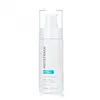What's inside
What's inside
 Key Ingredients
Key Ingredients

 Benefits
Benefits

 Concerns
Concerns

 Ingredients Side-by-side
Ingredients Side-by-side

Water
Skin ConditioningGluconolactone
Skin ConditioningCyclopentasiloxane
EmollientLactobionic Acid
BufferingPropylene Glycol
HumectantEthylhexyl Hydroxystearate
EmollientCyclohexasiloxane
EmollientTriethanolamine
BufferingLimnanthes Alba Seed Oil
Skin ConditioningGlycerin
HumectantArginine
MaskingC12-15 Alkyl Ethylhexanoate
EmollientGlycol Distearate
EmollientOctyldodecyl Myristate
EmollientStearyl Alcohol
EmollientPEG-100 Stearate
Glyceryl Stearate
EmollientEthoxydiglycol
HumectantHydrogenated Vegetable Oil
EmollientPetrolatum
EmollientDimethicone
EmollientAlgae Extract
EmollientHydrogenated Lecithin
EmulsifyingPhosphatidylcholine
EmulsifyingSodium Hyaluronate
HumectantPalmitic Acid
EmollientStearic Acid
CleansingMyristic Acid
CleansingSteareth-2
EmulsifyingCaprylic/Capric/Myristic/Stearic Triglyceride
EmollientHydroxyethylcellulose
Emulsion StabilisingXanthan Gum
EmulsifyingPolyacrylamide
C13-14 Isoparaffin
EmollientLaureth-7
EmulsifyingCaprylyl Glycol
EmollientDisodium EDTA
Sodium Sulfite
PreservativeSodium Bisulfite
AntioxidantPhenoxyethanol
PreservativeChlorphenesin
AntimicrobialCI 19140
Cosmetic ColorantCI 17200
Cosmetic ColorantWater, Gluconolactone, Cyclopentasiloxane, Lactobionic Acid, Propylene Glycol, Ethylhexyl Hydroxystearate, Cyclohexasiloxane, Triethanolamine, Limnanthes Alba Seed Oil, Glycerin, Arginine, C12-15 Alkyl Ethylhexanoate, Glycol Distearate, Octyldodecyl Myristate, Stearyl Alcohol, PEG-100 Stearate, Glyceryl Stearate, Ethoxydiglycol, Hydrogenated Vegetable Oil, Petrolatum, Dimethicone, Algae Extract, Hydrogenated Lecithin, Phosphatidylcholine, Sodium Hyaluronate, Palmitic Acid, Stearic Acid, Myristic Acid, Steareth-2, Caprylic/Capric/Myristic/Stearic Triglyceride, Hydroxyethylcellulose, Xanthan Gum, Polyacrylamide, C13-14 Isoparaffin, Laureth-7, Caprylyl Glycol, Disodium EDTA, Sodium Sulfite, Sodium Bisulfite, Phenoxyethanol, Chlorphenesin, CI 19140, CI 17200
Ingredients Explained
These ingredients are found in both products.
Ingredients higher up in an ingredient list are typically present in a larger amount.
Arginine is an amino acid that is important for human development. Your body uses is it to produce hair keratin and skin collagen.
As a cosmetic ingredient, Arginine has antioxidant properties and can also help repair damaged skin. This ingredient is derived either synthetically or from animals.
Arginine isn't fungal acne safe when used in the presence of other lipids (fats, fatty acids, oils, esters, etc). Oils and fats occur naturally within the skin, so take caution when using Arginine if you're prone to fungal acne.
Learn more about ArginineChlorphenesin is a synthetic preservative. It helps protect a product against bacteria in order to extend shelf life. In most cases, Chlorphenesin is paired with other preservatives such as phenoxyethanol and caprylyl glycol.
Chlorphenesin is a biocide. This means it is able to help fight the microorganisms on our skin. It is also able to fight odor-releasing bacteria.
Chlorphenesin is soluble in both water and glycerin.
Studies show Chlorphenesin is easily absorbed by our skin. You should speak with a skincare professional if you have concerns about using Chlorphenesin.
Learn more about ChlorphenesinDisodium EDTA plays a role in making products more stable by aiding other preservatives.
It is a chelating agent, meaning it neutralizes metal ions that may be found in a product.
Disodium EDTA is a salt of edetic acid and is found to be safe in cosmetic ingredients.
Learn more about Disodium EDTAGlycerin is already naturally found in your skin. It helps moisturize and protect your skin.
A study from 2016 found glycerin to be more effective as a humectant than AHAs and hyaluronic acid.
As a humectant, it helps the skin stay hydrated by pulling moisture to your skin. The low molecular weight of glycerin allows it to pull moisture into the deeper layers of your skin.
Hydrated skin improves your skin barrier; Your skin barrier helps protect against irritants and bacteria.
Glycerin has also been found to have antimicrobial and antiviral properties. Due to these properties, glycerin is often used in wound and burn treatments.
In cosmetics, glycerin is usually derived from plants such as soybean or palm. However, it can also be sourced from animals, such as tallow or animal fat.
This ingredient is organic, colorless, odorless, and non-toxic.
Glycerin is the name for this ingredient in American English. British English uses Glycerol/Glycerine.
Learn more about GlycerinLactobionic Acid is a PHA. PHAs are the gentle cousins to AHAS.
Like AHAs, they exfoliate the top layer of skin. Lactobionic acid also exhibits significant antioxidant activity.
PHAs are more gentle than AHAs due to their larger structure. This means they do not penetrate as deeply as AHAs and take a longer time to dissolve dead cells. Studies show PHAs do not cause as much irritation.
By removing dead skin cells, PHAs leave the skin brighter and with even-texture.
Learn more about Lactobionic AcidWater. It's the most common cosmetic ingredient of all. You'll usually see it at the top of ingredient lists, meaning that it makes up the largest part of the product.
So why is it so popular? Water most often acts as a solvent - this means that it helps dissolve other ingredients into the formulation.
You'll also recognize water as that liquid we all need to stay alive. If you see this, drink a glass of water. Stay hydrated!
Learn more about Water